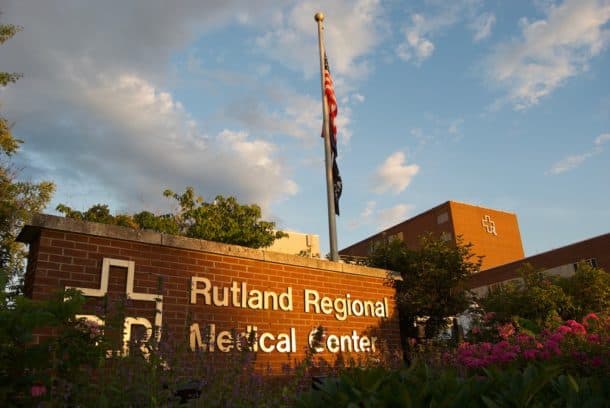By Liora Engel-Smith/VTDigger
Vermont is at the tail end of its most potent Covid-19 wave to date, but the pandemic’s financial implications continue to squeeze the state’s hospitals.
The latest budgetary pressure point were on display last week when executives from Vermont’s second-largest hospital asked state regulators to allow a 9% increase in service charges on commercial insurers — on top of the 3.6% regulators approved at the beginning of the fiscal year.
Rutland Regional Medical Center executives said inflation and the surging cost of personnel will cause a projected $7.6 million operating loss in the current fiscal year.
Rutland Regional’s chief executive and president Claudio Fort outlined the situation in a March 11 letter to the Green Mountain Care Board. Fort warned of painful cuts in necessary clinical services if the board rejects the hospital’s request. But if the care board approves the request, people with commercial insurance could face ballooning insurance premiums next year.
RRMC will reappear in front of the board for a potential vote on the budget adjustment on Wednesday, March 23, at 1 p.m.
The medical center in Rutland is not alone. Hospitals all over the state are spending more money than expected on travel staff — temporary workers whose pay rates are two to three times higher than full-time employees. At the same time, burned-out permanent employees are quitting to become travelers themselves.
“We currently do not have a contingency plan should our request be denied,” Fort said in his letter. Fort warned of painful cuts in necessary clinical services if the board rejects the request.
Members of the Green Mountain Care Board cannot comment on specific hearings ahead of time, but Rutland Senator Kevin Mullin acknowledged the dilemma at hand. The state’s workforce shortage creates a death spiral of sorts, where hospitals compete for an ever-shrinking pool of workers at a far higher cost.
Hospitals need more money, and they cannot adjust Medicare and Medicaid rates, so they balance their budgets by raising the cost of care for patients with private health insurance.
But beyond a certain point, patients find they cannot afford to get care, an issue that some privately insured Vermonters already face. Those Vermonters are likely to see their premiums rise over the next few years, unless federal and state governments offer additional aid, according to Mullin.
“I think if we all work together, we’ll find a way out,” he said, “but it won’t come without pain. There’s going to be pain in the form of higher rates for the next few years.”




